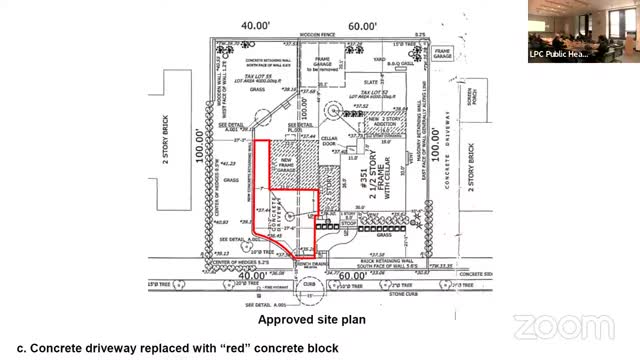Contractor negligence sparks historic district controversy
October 29, 2024 | Land Preservation Commission, New York City Board & Committees, New York City, New York County, New York
This article was created by AI summarizing key points discussed. AI makes mistakes, so for full details and context, please refer to the video of the full meeting. Please report any errors so we can fix them. Report an error »

In a recent government meeting, discussions centered around a significant violation of approved construction protocols in the Douglaston Historic District. Paul Graziano, representing the applicant, revealed that a contractor failed to adhere to the approved plans, leading to multiple issues that required rectification. Graziano emphasized that the contractor's negligence was the root cause of the current problems, which he was brought in to address at a late stage.
Commissioner Jefferson raised concerns about accountability, questioning whether the contractor would face penalties for their actions. However, it was clarified that the property owner bears ultimate responsibility for any violations, leaving the contractor without direct repercussions. Commissioner Ginsburg further probed why the owner did not withhold payment from the contractor for the unapproved work, to which Graziano admitted he could not provide an answer.
The Historic District Council, represented by Lucy Levine, expressed apprehension regarding the increasing number of legalization applications in the district, criticizing the lack of sufficient documentation to evaluate the differences between approved and unapproved work. Levine argued that the public process should not rely on staff to resolve incomplete applications post-hearing.
In response, a commissioner noted that the current case was not indicative of staff oversight but rather a failure by the contractor to follow the approved drawings. The applicant revealed that the property owners are currently in litigation with the contractor, highlighting the ongoing complications stemming from the situation.
As the meeting concluded, the focus remained on ensuring that future applications are thoroughly vetted to prevent similar issues, underscoring the importance of adherence to established protocols in historic preservation.
Commissioner Jefferson raised concerns about accountability, questioning whether the contractor would face penalties for their actions. However, it was clarified that the property owner bears ultimate responsibility for any violations, leaving the contractor without direct repercussions. Commissioner Ginsburg further probed why the owner did not withhold payment from the contractor for the unapproved work, to which Graziano admitted he could not provide an answer.
The Historic District Council, represented by Lucy Levine, expressed apprehension regarding the increasing number of legalization applications in the district, criticizing the lack of sufficient documentation to evaluate the differences between approved and unapproved work. Levine argued that the public process should not rely on staff to resolve incomplete applications post-hearing.
In response, a commissioner noted that the current case was not indicative of staff oversight but rather a failure by the contractor to follow the approved drawings. The applicant revealed that the property owners are currently in litigation with the contractor, highlighting the ongoing complications stemming from the situation.
As the meeting concluded, the focus remained on ensuring that future applications are thoroughly vetted to prevent similar issues, underscoring the importance of adherence to established protocols in historic preservation.
View full meeting
This article is based on a recent meeting—watch the full video and explore the complete transcript for deeper insights into the discussion.
View full meeting
